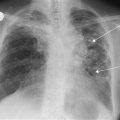Melaena
Melaena is the passage of altered blood PR. A melaena stool is black and tarry and has a characteristic smell. The blood is degraded by hydrochloric acid and intestinal enzymes high in the gastrointestinal tract. Melaena is unlikely to occur if bleeding comes from lower than the jejunum, although occasionally melaena may result from a bleeding Meckel’s diverticulum.
History
Swallowed blood
Check for a recent history of epistaxis or haemoptysis.
Oesophagus
There may be a history of excess alcohol consumption or a history of other liver disease to suggest oesophageal varices. Check for retrosternal burning pain and heartburn, which would suggest oesophagitis. Check for a history of dysphagia. The bleeding associated with varices is often torrential. That associated with oesophagitis is minor.
Stomach
History of epigastric pain to suggest peptic ulceration. There may be a history of steroid or NSAID medication. Mallory–Weiss syndrome usually occurs in the younger patient who has had a large meal with much alcohol and has a forceful vomit. The first vomit contains food, the second contains blood. Acute gastric erosions may occur with stressful illnesses, e.g. major surgery, acute pancreatitis, burns (Curling’s ulcer), head injuries (Cushing’s ulcer). It is unusual to get a large bleed with a carcinoma. Anaemia is a common presentation, and there may be ‘coffee ground’ vomit. Leiomyoma causes a moderate haematemesis. There is usually no preceding history. There will also be no preceding history with vascular malformations. Hereditary haemorrhagic telangiectasia is rare. The patient may present with a history of the condition, or it may be apparent from the telangiectasia around the lips and oral cavity.
Duodenum
Melaena tends to be a more common symptom than haematemesis with duodenal lesions. There may be a history of chronic duodenal ulceration, although often presentation may be acute with little background history. Bleeding from invasive pancreatic tumours is rare. The patient will present with malaise, lethargy, weight loss and vomiting. Haemobilia is rare. Aortoduodenal fistula is rare and usually follows repair of an aneurysm with subsequent infection of the graft. There is massive haematemesis and malaise.
Small intestine
Leiomyomas are rare but may bleed, resulting in melaena. Bleeding from a Meckel’s diverticulum, if it occurs fast enough, usually causes dark-red bleeding rather than characteristic melaena.
Other causes of dark stools
Take a full dietary and drug history.
Examination
Depending upon the severity of the bleed, there may be shock. The patient will be cold, clammy, with peripheral vasoconstriction; there will be a tachycardia and hypotension.
Swallowed blood
Check for blood around the nose. Examine the chest for a possible cause of haemoptysis.
Oesophagus
There may be little to find on examination except clinical signs of anaemia and weight loss, unless the cause is oesophageal varices, in which case there may be jaundice, abdominal distension due to ascites, spider naevi, liver palms, clubbing, gynaecomastia, testicular atrophy, caput medusae, splenomegaly or hepatomegaly.
Stomach
There may be little to find on examination. There may be an epigastric mass with a carcinoma, or a palpable left supraclavicular node (Virchow’s nodes). There may be epigastric tenderness. With hereditary haemorrhagic telangiectasia, there may be telangiectasia on the lips and mucous membrane of the mouth.
Duodenum
Again, there may be little to find on examination other than epigastric tenderness. In the rare case where duodenal bleeding comes from an invasive pancreatic carcinoma, there may be a palpable mass in the region of the pancreas.
Small intestine
Often there is little to find. Leiomyomas may be palpable.
Bleeding disorders
There may be sites of bruising or bleeding from other orifices.
General Investigations
■ FBC, ESR
Hb ↓ anaemia due to chronic bleeding, e.g. from carcinoma. ESR ↑ connective tissue disease.
■ U&Es
Urea and creatinine will be raised in uraemia. Urea may be raised due to absorption of blood from the bowel.
■ LFTs
Liver failure, oesophageal varices, haemobilia.
■ Clotting screen
Liver disease. Bleeding diatheses. Anticoagulants.
Specific Investigations
■ OGD
Will demonstrate most lesions, e.g. varices, oesophagitis, peptic ulcer, gastric erosions, Mallory–Weiss tear, carcinoma and rarer causes of bleeding. Biopsy may be carried out where necessary.
■ Angiography
Vascular malformations. Also may diagnose rarer distal duodenal causes, e.g. aortoduodenal fistulae.
■ Technetium scan
Meckel’s diverticulum containing gastric mucosa.
■ Labelled red cell scan
Rare small bowel causes of bleeding.




